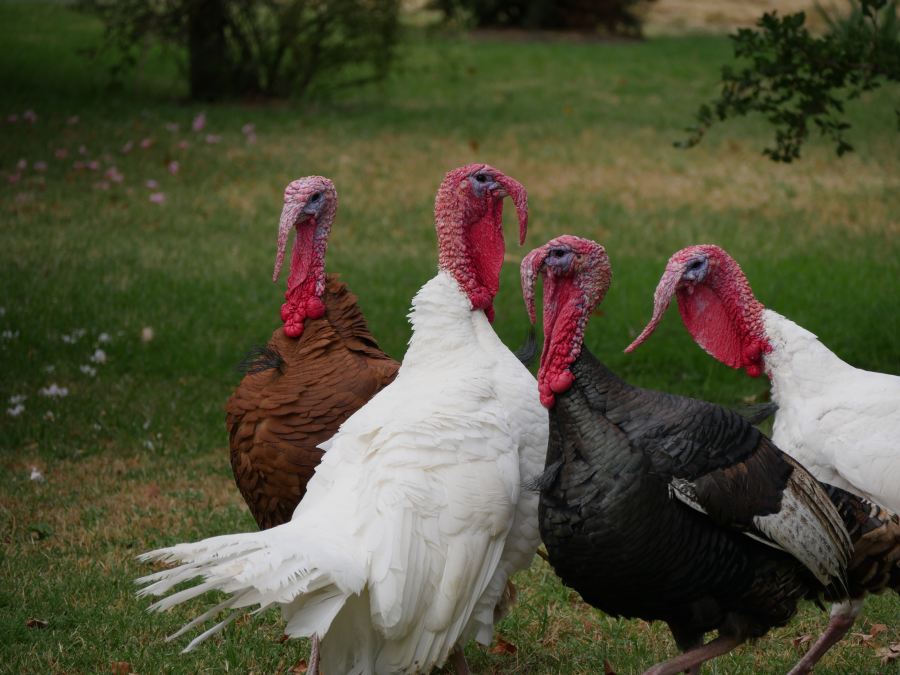Pakistan Easy to Read Information on Geography Inventions in Turkey

Although many people mistakenly call large groups of turkeys a gaggle or flock, they're technically referred to as a rafter according to the National Wild Turkey Federation. That's not the only interesting fact you might be surprised to discover about these distinctive birds. Check out these facts to see how much you know about turkey trivia.
What's In a Name
Did you ever wonder where the turkey got its name? While turkeys are native to North America, the birds received their name in honor of the country, Turkey. When early American visitors came across the birds, they saw animals that looked similar to birds from home called "Turkey birds."
Turkey birds are related to African guinea fowl that traveled through Turkey to settle in Europe during the Middle Ages. The similarity between the European Turkey bird and the North American bird caused the name to stick
T he Turkey/Dinosaur Link
Making a wish on a turkey's wishbone is a fun tradition shared by many people after enjoying a turkey feast. That wishbone is more than just a passing game. It's a direct link to the turkey's prehistoric lineage, as suggested by Live Science. It turns out, the Tyrannosaurus rex and Veliciraptors also had a wishbone, also known as a furcula.
T urkeys Nearly Became Extinct
At one time, experts estimate around 10 million turkeys lived in the United States. After the arrival of the early settlers, that population slowly dwindled. By the 1930s, hunting and development that destroyed the habitat of wild turkeys nearly drove these birds to extinction. Conservation efforts were successful and the wild turkey population is now somewhere around seven million according to what wildlife biologist Tom Hughes said in an interview with The Dodo.
T urkeys Leave the Nest at a Young Age
Babies, which are called poults, are born with feathers. Poults are self-sufficient so quickly that the young birds typically leave the nest within around 24 hours. Poults go out with their mothers to find food. A male turkey rarely plays a role in raising its young. The average lifespan of a turkey is three to five years, although the oldest wild turkey on record lived to 13 years of age, according to The Spruce.
G obble, Gobble
Did you know that one of the ways to tell the difference between male and female turkeys is to listen to their gobble? Males produce the distinctive sound to announce their arrival to females, communicate with his rafter and to warn of danger. That's why males are typically called gobblers, while females are called hens. Also notable—a turkey's gobble is so loud that it can be heard from up to one mile away.
B enjamin Franklin Respected Turkeys
One of America's Founding Fathers, Benjamin Franklin, had such respect for these birds that he would have preferred the turkey as the nation's symbol instead of the bald eagle, as noted by Live Science. He wrote a letter to his daughter that indicated he felt that turkeys were more respectable birds in comparison to eagles. He also was a fan of the turkey's native status. While eagles had been found in other countries, turkeys were specific to America.
B lushing Wattles
The exposed skin on a turkey's head and neck, commonly called its wattle, changes color according to a turkey's mood. During mating season, male turkey's wattles turn to a bright red in response to sexual hormones. In times of illness, fright or agitation, the snood (that odd fleshy projection on its forehead) can transform from its normal blue-gray or pale pink color to bright red, white or blue.
Source: https://www.reference.com/pets-animals/large-group-turkeys-called-4f8b4a81901c461?utm_content=params%3Ao%3D740005%26ad%3DdirN%26qo%3DserpIndex&ueid=4adcfb07-c1ec-437b-ac0c-533ef127e822
0 Response to "Pakistan Easy to Read Information on Geography Inventions in Turkey"
Post a Comment